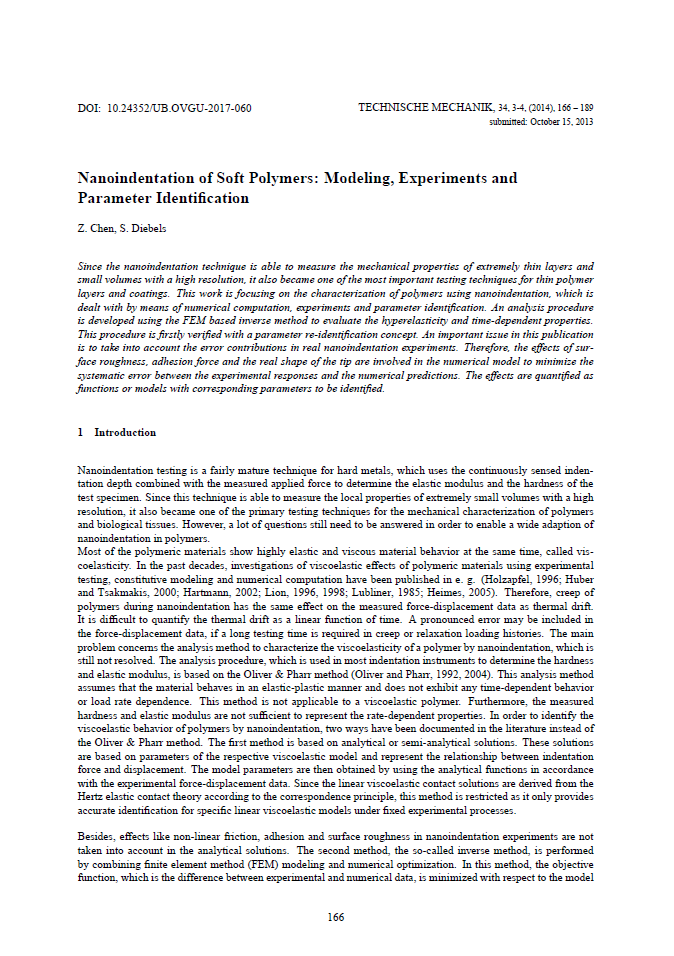Nanoindentation of Soft Polymers
Modeling, Experiments and Parameter Identification
DOI:
https://doi.org/10.24352/UB.OVGU-2017-060Abstract
Since the nanoindentation technique is able to measure the mechanical properties of extremely thin layers and small volumes with a high resolution, it also became one of the most important testing techniques for thin polymer layers and coatings. This work is focusing on the characterization of polymers using nanoindentation, which is dealt with by means of numerical computation, experiments and parameter identification. An analysis procedure is developed using the FEM based inverse method to evaluate the hyperelasticity and time-dependent properties. This procedure is firstly verified with a parameter re-identification concept. An important issue in this publication is to take into account the error contributions in real nanoindentation experiments. Therefore, the effects of surface roughness, adhesion force and the real shape of the tip are involved in the numerical model to minimize the systematic error between the experimental responses and the numerical predictions. The effects are quantified as functions or models with corresponding parameters to be identified.





